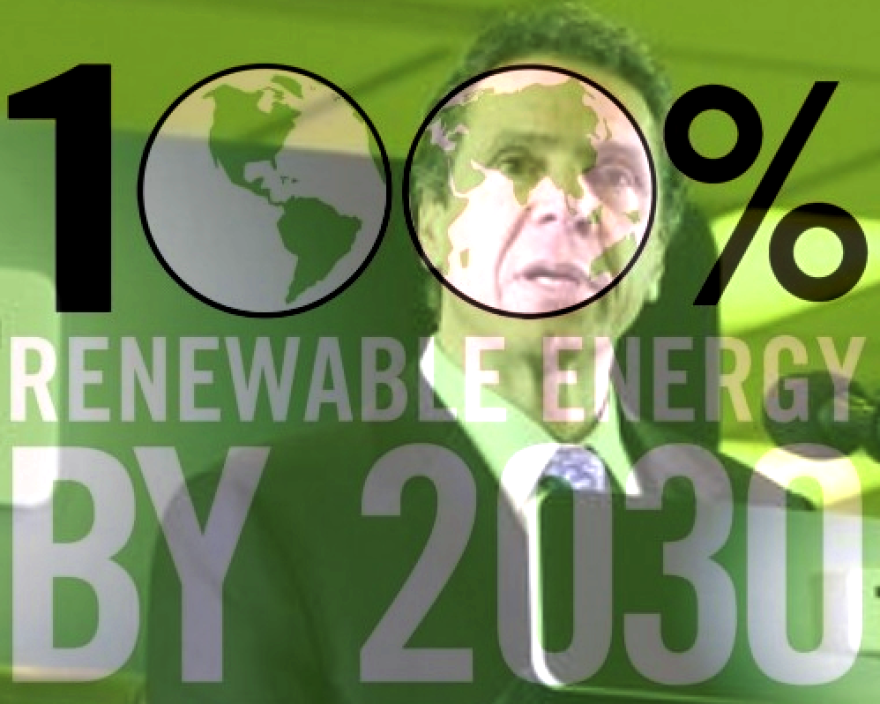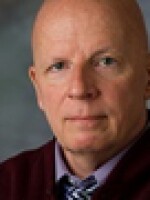Governor Andrew Cuomo's goal of generating half of New York’s electricity from renewable sources by 2030 has apparently caused some re-thinking on how to accomplish that goal.
In June, the Cuomo administration finalized the State Energy Plan, which established specific clean energy goals and a framework on how New York’s energy is to be produced, distributed and consumed. The plan calls for cutting greenhouse gas emissions 40 percent by 2030 from 1990 levels; lowering energy consumption in buildings 23 percent from 2012 levels, and generating half of the state’s electricity from solar, wind, hydropower and biomass by 2030.
Cuomo is expected to make reducing emissions and boosting green energy a focus of his state-of-the-state address in January: his administration announced Monday that it will task the state's Public Service Commission with enforcing the 50 percent target. Approximately a quarter of of the state's power now comes from renewable sources.
The plan includes a requirement that utility companies look to carbon-free sources when buying power, and opens the door for New York's nuclear power plants to play a role in supplying some of that carbon-free power. Governor Cuomo had been critical of nuclear power, but published reports indicate his plan would give utilities 15 years to use nuclear energy as a source of carbon-free power to foster development of the renewable industry.
Some environmentalists have praised Cuomo's efforts. Others have reservations. Mark Dunlea is co-co-ordinator of the 100% Renewable Now New York Campaign. "Governor Cuomo previously had been calling to shut down the Indian Point nuclear power plant, which poses a real security threat to the New York City environment, but he has been overly concerned about to protect the jobs in upstate communities that are provided both by some of the older nuclear plants and coal plants. So therefore, what he really was announcing yesterday was that he wants the state to increase subsidies for nuclear power plants in order to help preserve the jobs in upstate New York. We've been trying to educate him that if he wants to really create jobs, he should support a transition to 100 percent renewable energy as quickly as possible, because that creates far more jobs than continuing to prop up both old nuclear plants and coal plants which he is also spending hundreds of millions of dollars to keep open in New York State."
Dunlea warns that nuclear power is far from "carbon-free." "You have to build the plant, then you have to mine the uranium that powers the plant. You have to transport the uranium to the site, and then you have to de-commission the plant, which is often more expensive than building the plant itself. All those things, when you look at the life-cycle of the plat, actually nuclear power plants have a fairly significant carbon footprint."
Dunlea's group is urging the governor to further the cause of renewable energy by looking to solar and off-shore wind instead of relying on nuclear.
Nonetheless, former Vice President Al Gore hails Cuomo's announcement as a "terrific and bold" move that will help build "essential momentum" ahead of the climate talks in Paris.
In reality, it's proven difficult for the state to change horses when it comes to the power supply. Growing demand for electricity in Westchester and New York City is having an impact on some Hudson Valley counties. Several power proposals have been considered, including stringing new high-transmission lines critics fear would impart major environmental and visual impacts on many natural and some historic sites. Some of the lines proposed under New York’s Energy Highway initiative could be strung as high as 120 feet across seven counties.
Scenic Hudson President Ned Sullivan suggests the utility industry sees opportunities in New York to make profit by building to increase capacity. "Building $1.2 billion worth of new transmission capacity to bring power from old coal-fired power plants in central and upstate New York that are dirtiest, that are going to have more adverse quality impacts, is the wrong way to go. We see that in fact the Public Service Commission's own analysis has compared transmission lines with reforming the energy vision, and of course they found that reforming the energy vision will have a greater benefit in terms of cleaner air, addressing carbon issues..."
The PSC did not have a representative available for comment. The Cuomo Administration says refinements to the energy plan will roll out over the next several weeks.







